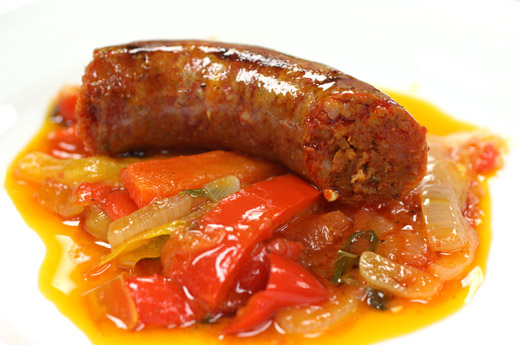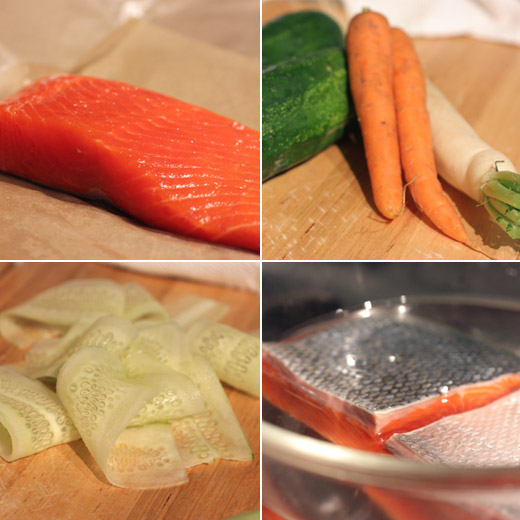![]()
![]()
![]()
Watermelon, which is a well-loved Texas summer fruit, is taken in a new direction via Southern India for this curry sauce. Making the sauce began with mustard seed oil being warmed in a saute pan. Cumin seeds were toasted in the oil, ground coriander and ground mustard seeds were added, finely diced green chiles and ginger came next, and this mixture cooked just until the chiles softened. Next, turmeric and pureed watermelon were added, and the sauce was allowed to reduce and thicken. The watermelon was not strained, so it retained some texture. I was offered tastes as the sauce reduced and Chef Duplechan explained how the watermelon takes on a squash-like flavor when cooked. It also becomes sweeter as the water evaporates. Once reduced, lime juice and zest were added which cut the sweetness, and chopped cilantro was added. In the end, the sauce had an underlying sweetness, bright lime flavor, and nice notes of heat from the chiles and ginger.
![]()
![]()
































